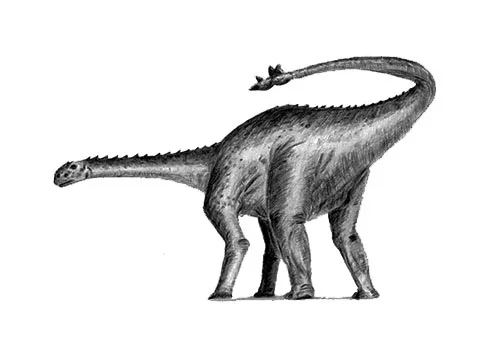Shunosaurus (Shu lizard)

Shu-no-sore-us
Ding, Zhou, & Zhang – 1983
Herbivore
Estimated 9 meters long
Sauropod
S. lii (type)
China – Shangshaximiao Formation, Xiashaximiao Formation
Mid Jurassic, 165-160 million years ago
Shunosaurus Facts
Shunosaurus, meaning “Shu lizard,” is a genus of sauropod dinosaur that lived during the Middle Jurassic period, about 165-160 million years ago. Its fossils have been found in China, and it is one of the best-known dinosaurs from this time period.
Shunosaurus was a large dinosaur, measuring up to 9 meters (30 feet) in length and weighing around 2-3 tons. It had a long neck and tail, and a relatively small head with peg-like teeth, which it used to strip leaves from trees and other vegetation. Its forelimbs were shorter than its hindlimbs, and its feet had wide, flattened soles that helped to support its weight.
One of the most striking features of Shunosaurus was the large bony plates that ran down its back and tail. These plates, called osteoderms, were embedded in the skin and provided protection against predators. Some of the osteoderms in the tail were also elongated and fused together to form a spiked “club” that could be used as a weapon for defense.
Shunosaurus is an important dinosaur because it is one of the best-known and most well-preserved sauropods from the Middle Jurassic period. Its fossils have provided valuable insights into the anatomy, behavior, and ecology of these dinosaurs. For example, studies of Shunosaurus bones and teeth have revealed that it grew very rapidly during the first few years of its life, and that it likely had a diet that was high in fiber and low in protein.
Overall, Shunosaurus is a fascinating dinosaur that has contributed to our understanding of the diversity, anatomy, behavior, and ecology of the sauropod dinosaurs, as well as the broader history of life on Earth during the Middle Jurassic period.



